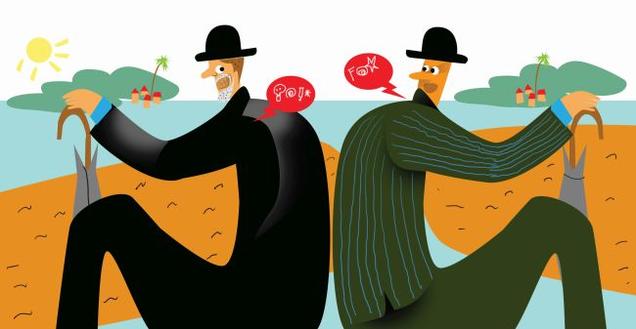Anglos in the two localities have woken up to the yawning differences between them. Here’s how they drifted apart
Darla Jacob* likes hip-hop, Nancy Vincent* likes waltz. Darla likes hard rock, and Nancy, classical music. Darla punches codes and Nancy strings words, for a living.
They are cousins. They are Anglo-Indians. One lives in Pallavaram, and the other in Perambur.
Those outside the community tend to paint Anglo-Indians in one colour with a few variations of it. But the quintessentially Anglo-Indian qualities are vigorously reshaped by geography and nurture, and only a bewildering palette of colours can do justice to them. Every Anglo-Indian group is distinct from all others. The Pallavaram and Perambur groups, counted among the oldest in Chennai, seem to follow different muses. Interestingly, these muses are reported to be at drawn swords.
The Pallavaram Anglos claim they are less insular. Says Darla,“Don’t think I am biased because I am from Pallavaram. I think we blend in a lot better, when we are around non Anglo-Indian crowd. We too use the standard Anglo language like ‘what child’ and ‘what man’, but know when to tone it down.”
There is a theory that Anglo-Indian groups maintaining strong links with the Railways have managed to prevent traditions from being reshaped by the cross-winds of outside influences. Even now, when Anglo-Indians are moving to other countries at a rate that is causing concern to traditionalists, the Railways contributes considerably to the self-identity of the Anglos in Perambur.
In contrast, the Pallavaram Anglos have always had a tenuous link with the Railways with a majority of them employed in the Army. Veteran Lines, a famous Anglo-Indian locality in Pallavaram, was created for World World II veterans. Moreover, the Pallavaram group was among the earliest to turn to the private sector for jobs. To illustrate the point, successive generations of Anglos from Pallavaram were on the rolls of English Electric (now called AVERA), a private company.
“Following the end of the British Raj, Anglos in the southern settlements took up jobs in the private sector, while those in Perambur continued with the Railways and kept to their cliques,” says Mary Mathew*, a long-time resident of St. Thomas Mount and therefore has no axe to grind in this discussion. Ruth Carlton* says, “Yes, it is true. I believe we take a lot more pride in being Anglo-Indian than any other group. It is probably because Perambur was one of the earliest British settlements in Madras.”
Roy Rozario, a Railway employee and a man given to following Anglo-Indian proprieties, thinks Anglo-Indian associations in and around Perambur are more active than most others from the rest of city. As a result, initiatives to conduct traditional balls come more frequently from this part of the city.
As Anglos have an almost intrinsic love for music and dance, these cultural get-togethers help members of the community bond better. Do the differences between the Pallavaram and Perambur groups come to the fore?
“They do, but manifest in subtle ways – a snide remark here and a snarky look there,” says Brian Chatelier*.
Harry MacLure, a force working towards preserving the Anglo-Indian ethos, says there may be differences, but not strong enough to drive the groups decisively apart.
“Regular get-togethers are all it takes to help these groups appreciate each other better. Beyond these groups, there are people who are cut off from the community because work has led them into areas totally devoid of any Anglo-Indian influence. For example, due to employment in the IT sector, Anglo-Indians settle down in areas such as Velachery. Helping these people stay connected to the community is more of a worry than undoing the often imagined slights between any two Anglo-Indian groups,” says MacLure, who is editor of Anglos In The Wind, a community magazine.
Most of the younger Anglo-Indians from Pallavaram and Perumbur consider themselves free of prejudices that mark relations between the groups. They say the differences are not something to be frowned upon: they add variety to a community that is often presented in a single-tone colour.
*Names changed to keep Anglos from Perambur and Pallavaram from stepping on each other’s toes, quite literally at the next May Queen ball.
source: http://www.thehindu.com / The Hindu / Home> Features> MetroPlus> Society / Melange / by Susanna Myrtle Lazarus / Chennai – April 19th, 2014
